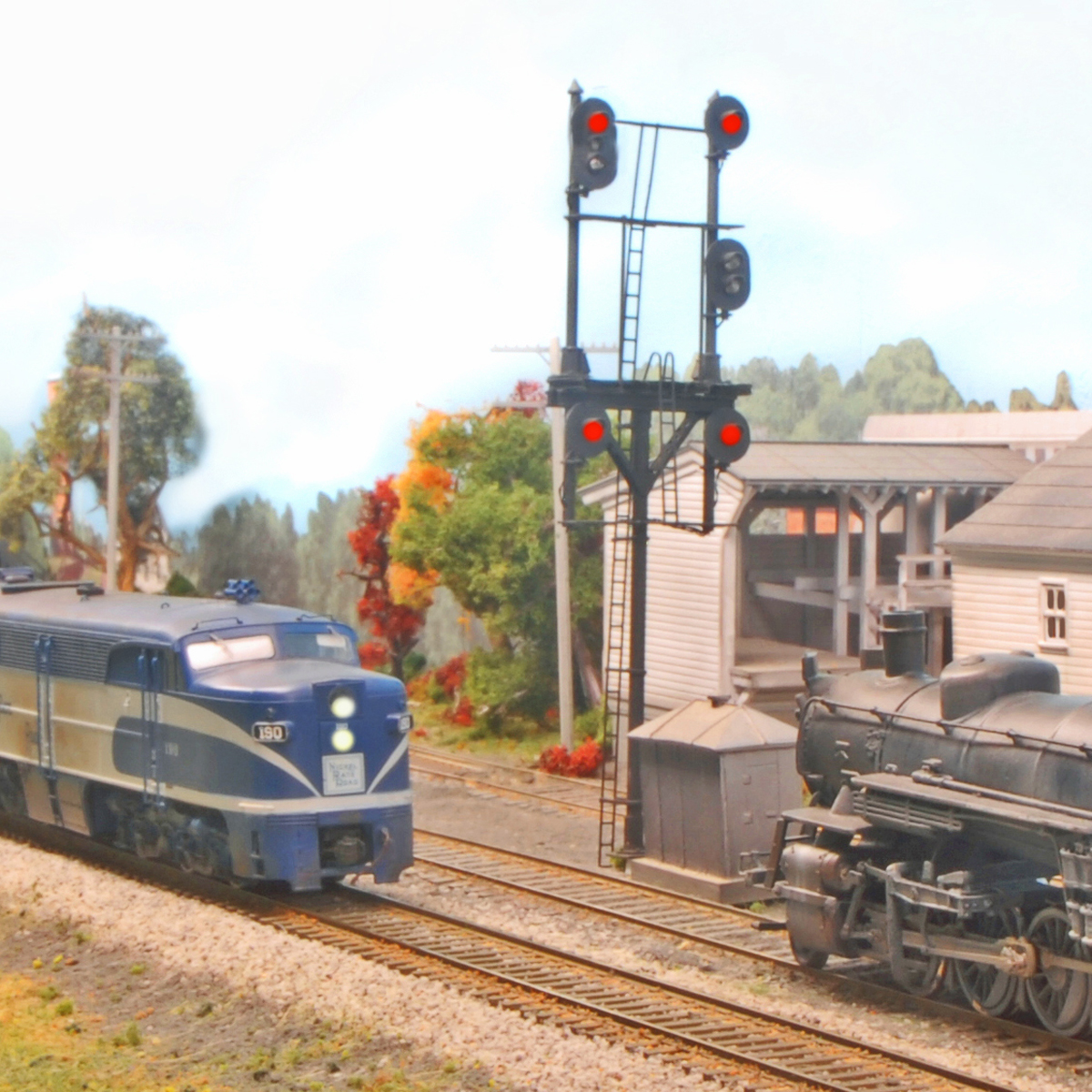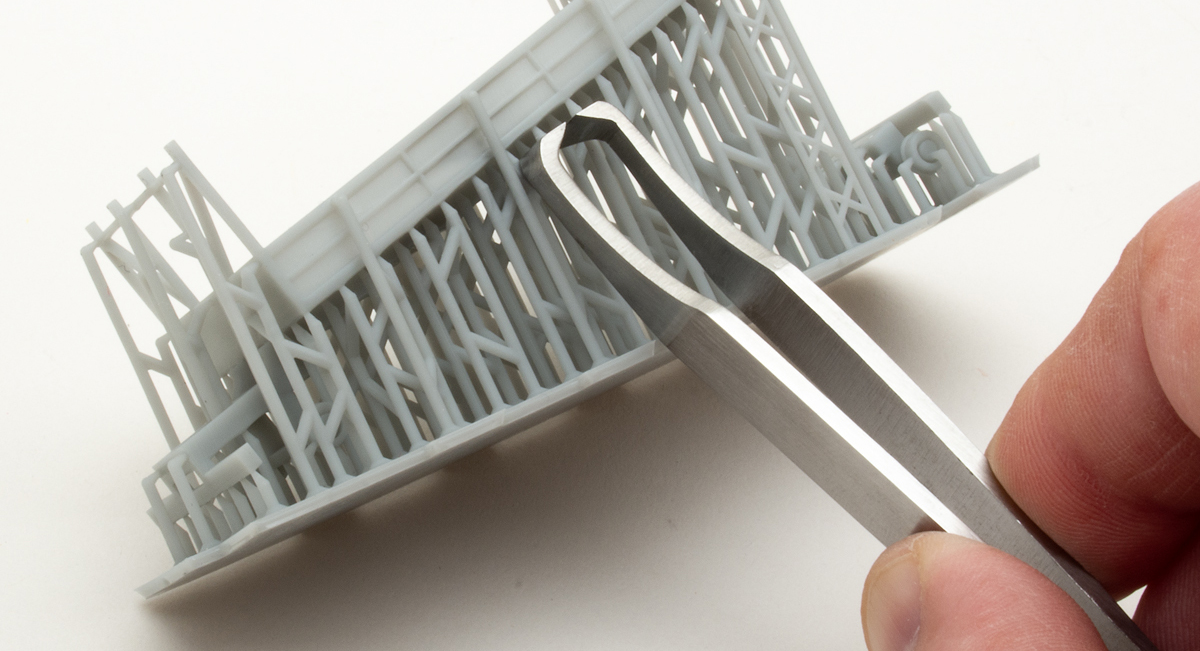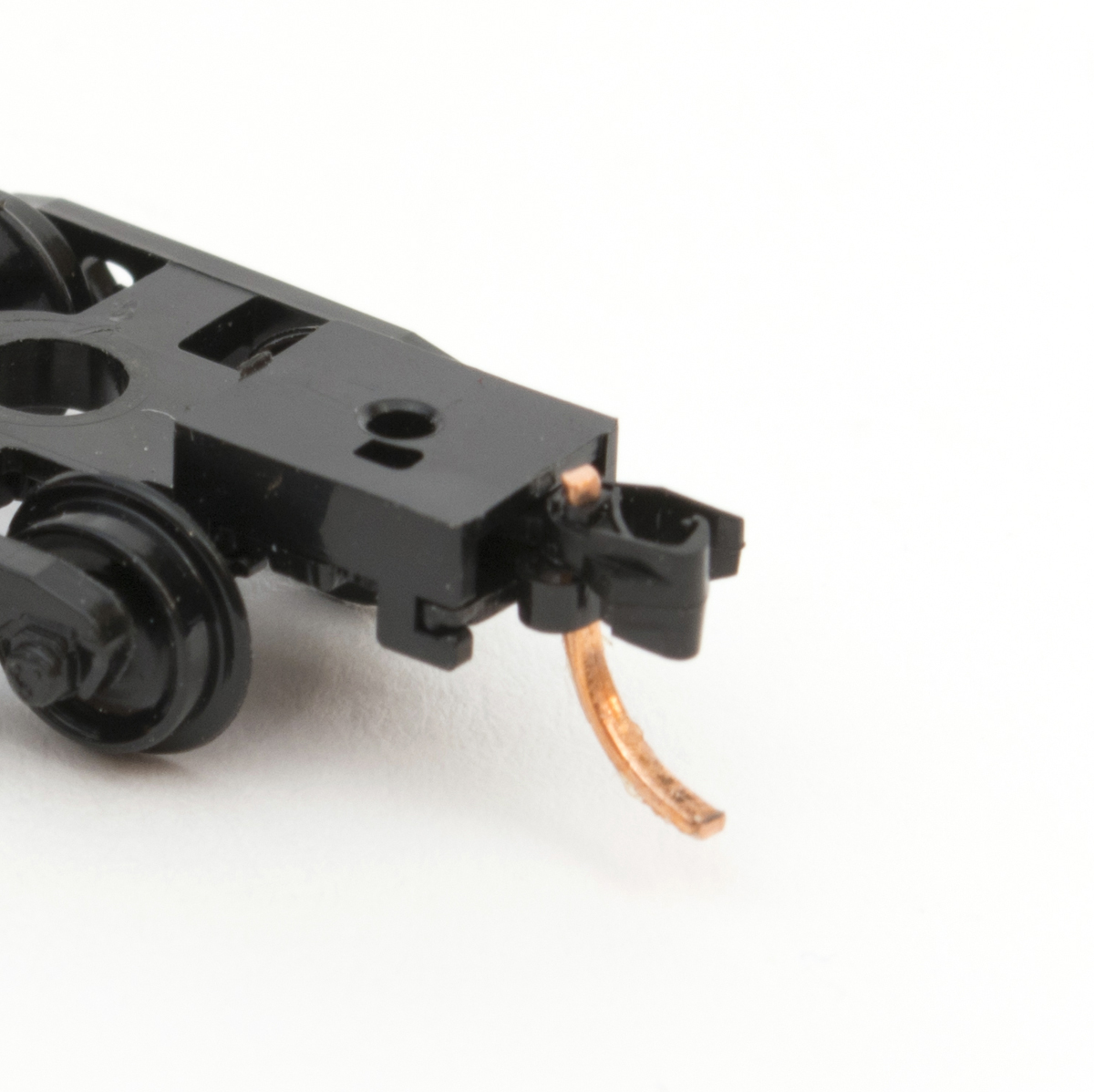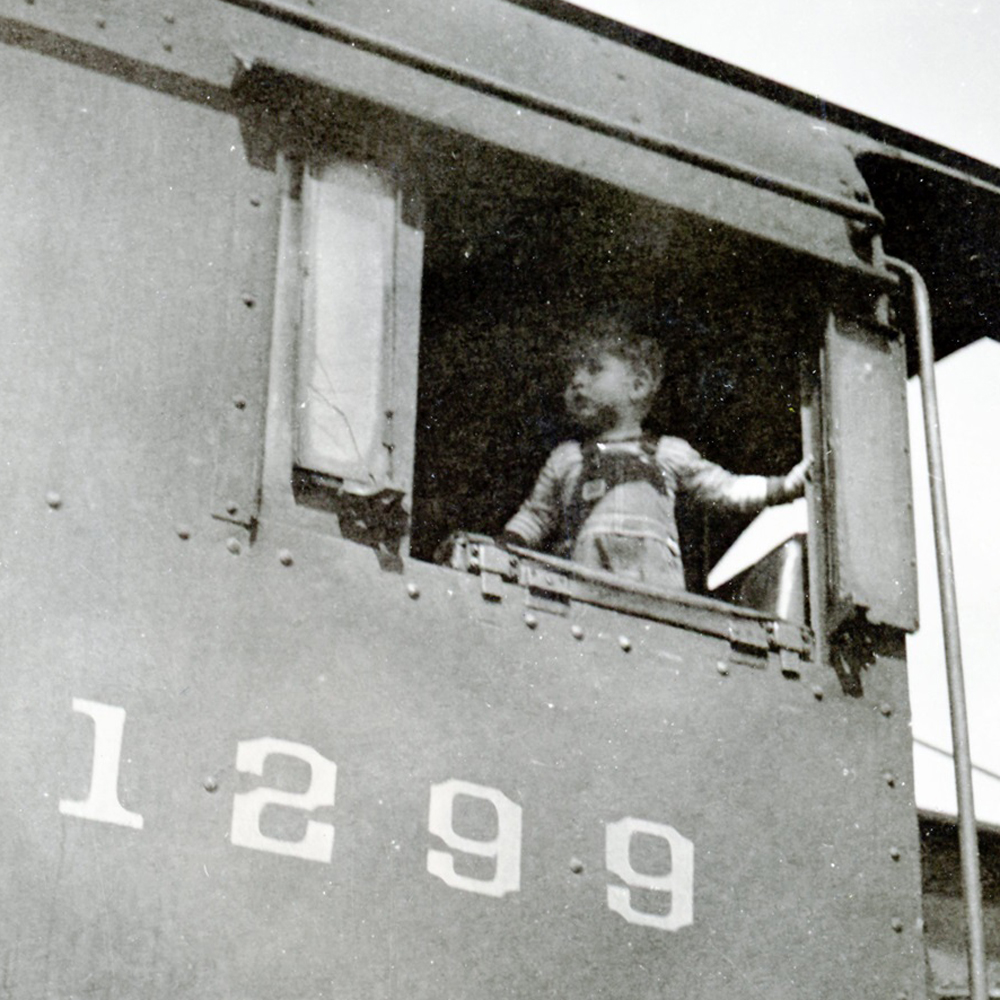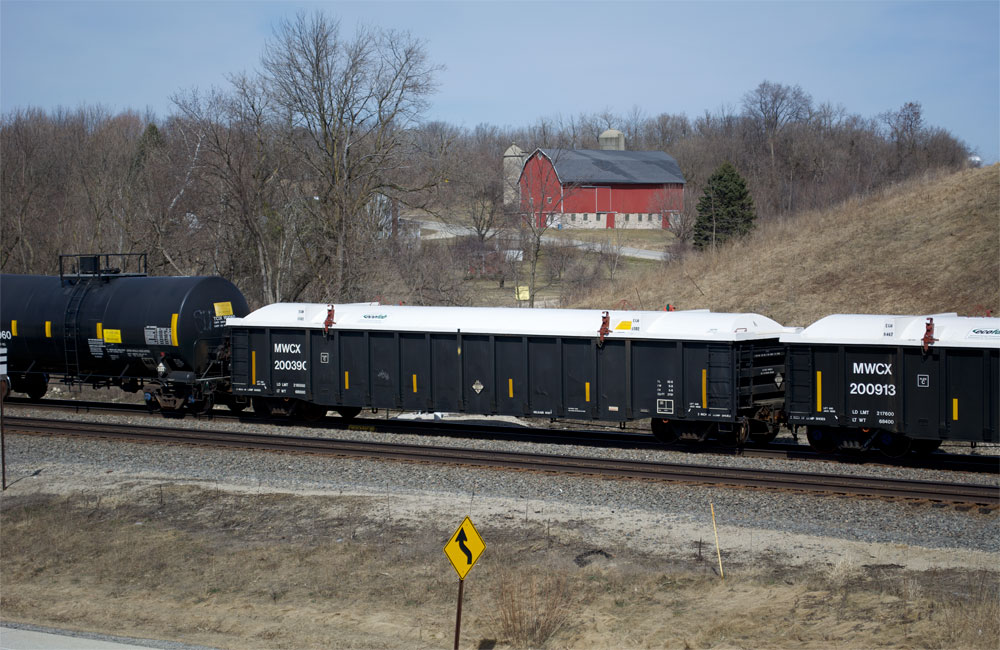
Q: What kind of cargo is in those gondolas I see that have rounded covers on them? – John Martin
A: That depends on the kind of covers you’re talking about. If the gondola in question has low sides and the cover is a tall one with lifting and stacking brackets on it, it’s a coil steel car. Since coils of sheet steel are so heavy, these cars usually carry only four to six coils each. They’re loaded and unloaded by the same over-the-rails crane that lifts the covers on and off.
But modern coil steel cars don’t resemble gondolas as much as they used to, so it’s more likely you’re asking about regular gondolas with low, arched lids like the one shown in the photo above. These lids are usually made of Fiberglas, white in color, and attached to the rim of the gondola with clamps. This kind of cover is fairly modern. Earlier gondola covers were slightly peaked, like the roof of a boxcar; many had roof walks. Before that, a gondola’s lading might be protected by a tight-fitting tarp.
What do covered gondolas carry?
Gondola covers are used any time the lading has to be protected from the weather. This could be because the cargo itself has to be kept clean, but these days ladings like that are more likely to be carried in covered hoppers. A more likely answer is that the lading is something the shippers don’t want to blow away. Copper concentrate, for example, is often carried to the smelter in covered gondolas because its dust can be dangerous if inhaled.
Likewise, covers are used on gondolas carrying contaminated or radioactive dirt from industrial cleanup sites to an incinerator, decontamination site, or landfill. Coal ash is another lading that a railroad would not like the wind to distribute along its right-of-way. These are the most likely cargos for a covered gondola, but others are possible.
Send us your questions
Got a question about modeling, operation, or prototype railroading? E-mail it to us at AskTrains@Trains.com. Include your full name and hometown and put “Ask MR” in the subject.






